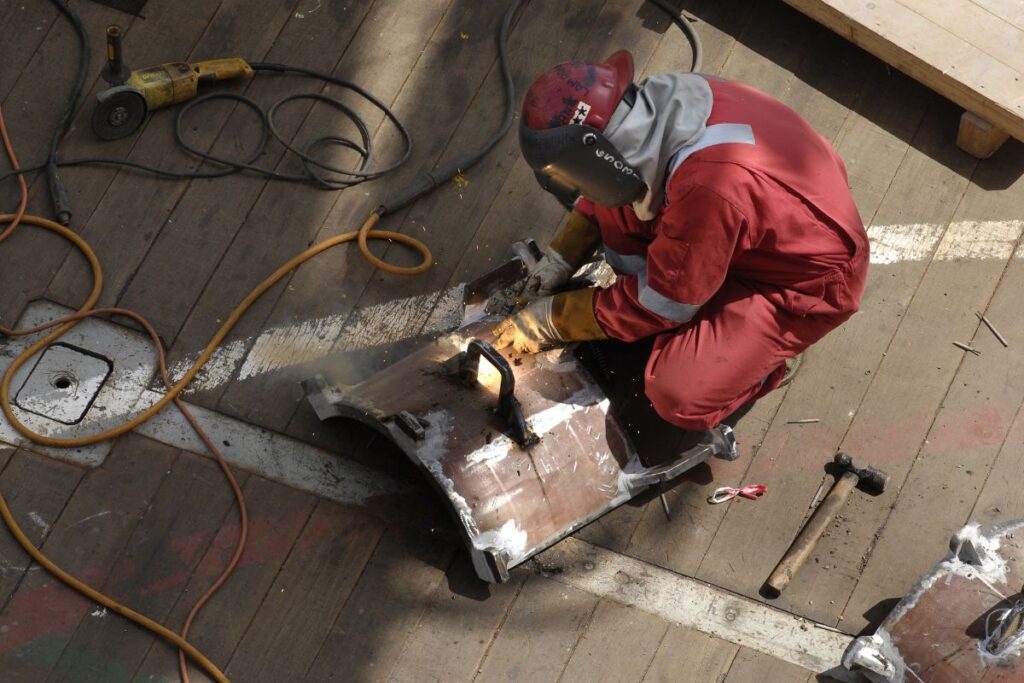
Welding is both an art and a science. Achieving a strong, flawless weld requires precision, skill, and knowledge of the materials and techniques involved. However, even the most experienced welders occasionally face issues that cause welds to fail. Whether you’re a novice or a seasoned professional, understanding and troubleshooting common welding defects is crucial for ensuring the integrity and durability of your work. In this blog, we’ll explore some of the most common welding defects, their causes, and how to prevent or fix them.
One of the most common welding defects is porosity, which manifests as small holes or cavities within the weld metal. These occur when gas becomes trapped in the weld pool, solidifying and leaving behind voids. The presence of contaminants such as oil, rust, or paint on the welding surface often causes this issue. Additionally, moisture in the base metal or filler material can contribute to porosity, as can improper shielding gas coverage. To prevent porosity, it is essential to clean the welding surface thoroughly before starting, ensuring the base metal and filler material are dry, and checking the shielding gas flow rate and coverage. Proper preparation and attention to detail can significantly reduce the occurrence of this defect.
Cracks in welds are serious defects that can significantly compromise the structural integrity of the welded component. They can occur in various forms, including hot cracks, which develop at high temperatures during the welding process, and cold cracks, which appear after the weld has cooled. Crater cracks occur when the welding arc is stopped abruptly, leaving a small depression that can crack as it cools. The primary causes of cracks include rapid cooling of the weld metal, high levels of stress or residual stress in the weld, and the use of incompatible or improper welding materials. To prevent cracks, preheating thicker materials can help reduce thermal stress while using proper welding techniques can manage heat input and cooling rates. Selecting compatible filler materials and base metals is also crucial in avoiding this defect.
Incomplete penetration is a defect where the weld metal does not fully penetrate the joint, leading to weak and potentially dangerous welds. This issue is often caused by incorrect joint design or preparation, insufficient heat input, or improper welding techniques. To address incomplete penetration, it is vital to ensure proper joint design and preparation, adjust welding parameters to achieve adequate heat input, and practise correct welding techniques. Thorough training and adherence to best practices can help welders achieve full penetration, resulting in stronger and more reliable welds.
Undercutting is a defect characterized by a groove or crater at the toe of the weld, which weakens the weld joint. This problem typically arises from excessive welding current, incorrect electrode angle, or poor welding technique. To prevent undercutting, welders should adjust the welding current to appropriate levels, maintain the correct electrode angle, and use a consistent welding technique. Attention to these factors can significantly reduce the likelihood of undercutting and improve the overall quality of the weld.
Spatter consists of small droplets of molten metal that are expelled from the weld and adhere to the surrounding surfaces, creating a messy and potentially problematic weld area. The primary causes of spatter include excessive welding current, incorrect electrode or wire feed settings, and contaminated welding surfaces. To minimize spatter, it is essential to adjust the welding current to proper levels, set the correct electrode or wire feed parameters, and clean the welding surface thoroughly before starting. Reducing spatter not only improves the appearance of the weld but also reduces the need for post-weld cleanup.
Lack of fusion occurs when the weld metal fails to fuse properly with the base metal or preceding weld passes, resulting in weak joints. This defect is often caused by insufficient heat input, incorrect welding technique, or contaminants on the welding surface. To address the lack of fusion, welders should increase heat input by adjusting welding parameters, use proper welding techniques to ensure adequate fusion and clean the welding surface to remove any contaminants. Ensuring complete fusion is essential for producing strong, durable welds that meet industry standards.
Troubleshooting welding defects is an essential skill for any welder. By understanding the common causes of defects like porosity, cracks, incomplete penetration, undercutting, spatter, and lack of fusion, you can take proactive steps to prevent them. Remember, thorough preparation, proper technique, and attention to detail are key to producing strong, reliable welds. At the Welding Academy, we’re dedicated to helping you hone your skills and achieve welding excellence. Keep practising, stay informed, and don’t hesitate to seek expert advice when needed. Happy welding!